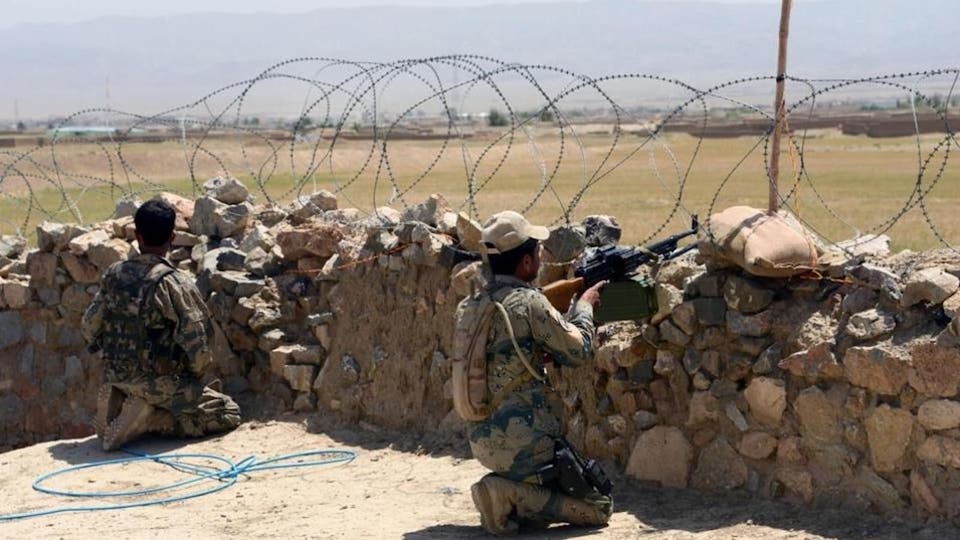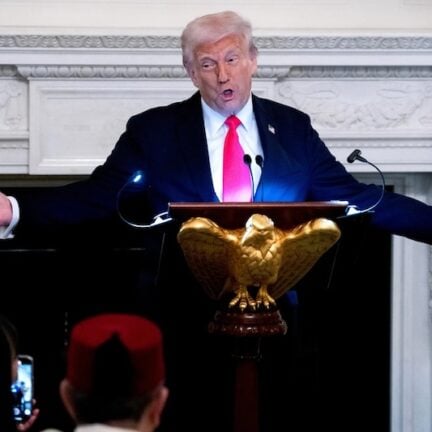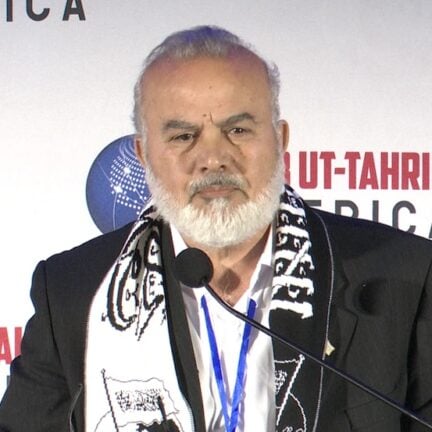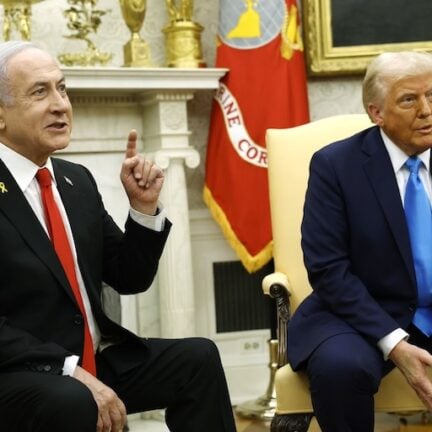Question:
Attacks or clashes occur from time to time between the security forces in Afghanistan and Pakistan, on both sides of the Durand Line, whilst dozens of people lose their lives in these attacks between the two countries. Border tensions between the two countries have escalated since the Taliban seized power in Afghanistan in mid-August 2021. What are the causes for this? Are there local or foreign causes?
Answer:
To clarify these causes, we review the following:
Firstly: The historical and geographical reality of Afghanistan and Pakistan:
1- In 1893, an agreement was concluded between the Foreign Secretary of British India at the time, Sir Mortimer Durand, and the Emir of Afghanistan, Emir Abdur Rahman Khan, to draw the border, which was called the Durand Line, at a length of 2,640 kilometers between Afghanistan and Pakistan, extending from the northeast to the southwest. These border demarcations were then later adopted as the official borders of Pakistan and Afghanistan, whilst the Pashtun tribes were partitioned across both sides of the line. Note that the border area between them is inhabited by Muslims who belong to the Pashtun. Pashtun are considered the largest majority in Afghanistan, as they constitute over forty percent of the population, whilst all the rulers of Afghanistan for around two centuries have been from among Pashtun. In addition, the Pashtun are the second largest majority in Pakistan, after Punjabis.
However, Afghanistan refused to recognize this line, especially since Britain at that time did not take into account the demographic, ethnic and tribal structure of the region, around the Durand Line, which was drawn artificially, on 12 November 1893, taking into account only British colonialist interests. Like many before them, the British struggled to control the frontier regions, where the tribes in the mountains were unruly. They refused to be ruled by both the Persians and the rulers in India, who tried to expand. Britain suffered a humiliating military defeat in Afghanistan, during its aggression between 1839 and 1842. Then Britain again launched an invasion in 1878, but withdrew after two years. However, it gained political influence over the rulers of Afghanistan, who signed the Gandamak Agreement in 1879, according to which Afghanistan lost vast lands to the British colonialism, that came to rule the Islamic Indian Subcontinent. The rulers of Afghanistan accepted Britain’s supervision of Afghan foreign relations. Moreover, they limited their foreign relations by it, in exchange for a financial subsidy provided by Britain to Afghanistan…
2- Around the mid-twentieth century, Britain controlled both countries, Afghanistan and Pakistan, and their policies. Its control continued until the collapse of British influence through military coups in Pakistan, that America engineered. British influence in Afghanistan feel too, after the end of the monarchy, followed by the domination of the Russians, during the era of the Soviet Union, and their occupation, at the end of the year 1979. However, the Russians suffered terrible defeat and left Afghanistan, humiliated. America began working to replace Russia and extend its influence, through both Pakistan and Saudi Arabia, which both follow America. Then the first Taliban government was established in 1996. America overthrew it with its invasion of 2001, and its subsequent occupation of Afghanistan. However, after having occupied the country for twenty years, America came to be humiliated and militarily defeated in 2021, so the Taliban took power again, on August 15, 2021.
Secondly: The recent clashes between Afghanistan and Pakistan:
1- When the Taliban movement became the ruler in Kabul, after America’s withdrawal in August 2021, according to the Doha Agreement, it began to loudly reject the border measures undertaken by Pakistan. Border provocations became the dominant situation between the two parties, on both sides of the actual border demarcation. These borders were heated at times, with severe restrictions on Afghan refugees and Pashtun families, who used to move freely across the border, without being intercepted, in the past. Matters escalated to becoming accompanied by clashes, incurring victims, to open the borders and allow the movement of people and goods. Then, Pakistan increased the restrictions and imposed an entry visa on the Afghans for the first time in history. These tensions have been exacerbated by Pakistan’s erection of a border fence, over three meters high. Hundreds of millions of dollars have been spent on constructing hundreds of kilometers of border fencing, all under the pretext of regulating the movement of both goods and people, as well as protection from “terrorists.” Thus, the fence was one of the causes of the tense situation, and the occurrence of clashes in the border area, between the two countries. Then, the Taliban government prevented Pakistan’s armed forces from continuing to erect the fence along the border between the two countries, for about 2,700 km, after it had completed about 90% of it. The government of Ashraf Ghani had agreed to the fencing before it fell. However, the Taliban government confronted Pakistan’s armed forces, whenever the latter attempted to complete the erection of the fence, which led to clashes between the two parties in different border areas, resulting in deaths and injuries to both sides. The situation there was expressed by the tribal leader in the southern province of Khost, Mina Gul Zadran, by saying, “The stance of the Taliban movement is consistent with the nature of the tribes living on both sides of the border, as it is not possible to erect a fence between the people of one clan, united by one tribe, customs, religion and gathering. There are family ties between both sides. Therefore, the tribes were not satisfied from the beginning with the construction of the fence, but they were unable to do anything. The government of Ashraf Ghani agreed with Pakistan about the fence, but the Taliban movement knows the importance of the tribes with regards to it and it is it that derived all its strength from these tribes…” (The New Arab, 19 April 2022).
2- Thus, matters worsened between the two countries, especially when Pakistan accused the ruling Taliban movement of not preventing the Tehreek-e-Taliban Pakistan (TTP) movement, from attacking the Pakistan Army. Then Pakistan bombed sites inside Afghanistan claiming that they belonged to the TTP movement, and the disputes between the two parties intensified. Then the Taliban accused Pakistan of still being an air corridor for American aircraft that bombed Afghanistan, as in the raid that killed Al-Qaeda leader Ayman Al-Zawahiri in Kabul. It was reported that “The Taliban’s acting defence minister said on Sunday that Pakistan had allowed U.S. drones to use its airspace to access Afghanistan, which Pakistan’s foreign minister denied. Pakistani authorities have previously denied involvement in or advanced knowledge of a drone strike the United States said it carried out in Kabul in July that killed al Qaeda leader Ayman al-Zawahiri. Afghan Acting Minister of Defence Mullah Mohammad Yaqoob told a news conference in Kabul that American drones had been entering Afghanistan via Pakistan.” (Reuters, 28 August 2022).
3- The interests of Pakistan have been subject to attacks, whether domestically or within Afghanistan, from the TTP movement. The Pakistani armed forces began attacking the movement’s sites inside Afghanistan. The forces launched air strikes, targeting the provinces of Khost and Kunar in eastern Afghanistan, in April 2022, with a death toll of 47 people. These were in response to attacks originating from the border regions with Afghanistan, that targeted Pakistani soil, killing seven Pakistani soldiers in the Waziristan region, at the hands of gunmen, that were moving inside Afghan territory, with ease and without hindrance. The Taliban government warned the Pakistani government that it will not remain silent, and will respond strongly, if such attacks were repeated. Although a cease-fire agreement was brokered between the TTP movement and the government of Pakistan on June 2, 2022, in Kabul, with the mediation of the Afghan government, the agreement was subject to a crack when Pakistan killed one of the leaders of the movement, along with three of his aides in August 2022. Pakistan considered TTP responsible for the Army Public School (APS) massacre, in which 132 school children were killed in 2014. Other operations followed from both sides… The latest clashes took place on 15 December 2022 when at least sixteen Pakistani civilians were injured, as fighting broke out between Pakistani and Afghan border forces, for the second time in less than a week, near the Chaman-Spin Boldak border crossing, one of the busiest crossings and a major trade route, which remained closed for a week. High-ranking military and civilian officials from the two countries held a meeting at the crossing upon the Pakistan-Afghanistan Friendship Gate on 20 December 2022, to discuss mechanisms and efforts to establish peace and stability on the borders of the two countries, against the backdrop of these tensions in the border regions between the two countries, including firing and numerous reciprocal attacks, between the forces of the two parties. Pakistan closed its crossings temporarily during those days. However, the meeting failed and did not achieve any tangible results!
Third: The motive for these clashes, and the cause of the heated tension between the two countries:
The answer to this mandates considering two important matters: the pressure upon, and provocation of, the Taliban, from Pakistan, and from America, as follows:
1- Pressure and provocation from the regime in Pakistan:
a- In terms of provocation against the Afghans on its borders, Pakistan is harassing the Afghans and preventing them from ease of movement, bombing inside Afghanistan, erecting the border fence and imposing it as a fait accompli, whilst severely strengthening border and security facilities. All of these Pakistani provocations push the ruling Taliban movement in Afghanistan to respond, so the Taliban respond to the bombing with artillery, and dismantle some parts of the border fence, erected by the Pakistani armed forces. This creates immense friction, vehemence and tension, which keeps both sides with fingers on triggers.
b- Similarly, the Pakistani armed forces’ war against the Pashtuns in Pakistan, and other measures, such as moving the border line into Afghanistan and having severe restrictions on Afghan refugees and Pashtun families, who used to move freely across the border without being intercepted by anyone in the past. Matters escalated to becoming accompanied by clashes, incurring victims, in order to open the borders and allow the movement of people and goods. Then Pakistan increased the restrictions and imposed an entry visa on the Afghans for the first time in history…
c- This tension was increased by the fact that the Pakistani regime facilitated an air corridor for American aircraft that bombed targets inside Afghanistan, as in the raid that claimed the life of Al-Qaeda leader Ayman Al-Zawahiri in Kabul, as stated above in the statement of Mullah Mohammed Yaqoub.
2- Pressure from America upon the Taliban regime:
a- Ensuring that there is no international recognition of the Taliban’s rule in Afghanistan and that it is considered a de facto rule only, the US stipulated numerous conditions to provide international recognition. International recognition became a weapon against the Taliban rule. It must adhere to international conditions, such as the involvement of a handful of Afghan secularists and former American agents in governance, and such as those related to women’s rights, with fabricated claims and attacking the Taliban movement in this regard…
b- Withholding the funds of Afghanistan deposited abroad and preventing the new government from obtaining that money, and even spending part of it in non-governmental ways, i.e. to weaken the rule of the Taliban movement, including pressure with demands and attempts to establish civil society organizations in Afghanistan, linked to the West.
c- The United States wants India to focus on China by securing India’s borders from Pakistan’s side. This requires keeping Pakistan preoccupied with border incidents with Afghanistan. Whilst this front between Pakistan and Afghanistan does not subside, the Pakistani front towards India settles down, leaving India to devote itself to its front with China…
3- The linkage of this pressure upon the Taliban, on the part of both America and Pakistan. This is especially since Pakistan is now living under a regime that is highly loyal to America, after the Shahbaz Sharif regime assumed power in Pakistan, on 11 April 2022. Therefore, the regime in Pakistan does not carry out international relations and foreign policy, except within the limits of American requirements… By linking all of this together, the following becomes clear:
a- America concluded a peace agreement with the Taliban in 2020 in Doha, the capital of Qatar, wherein the Taliban movement pledged in the name of the Islamic Emirate of Afghanistan that, “Afghan soil will not be used against the security of the United States and its allies…” and that it “will prevent any group or individual in Afghanistan from threatening the security of the United States and its allies, and will prevent them from recruiting, training, and fundraising and will not host them” and that, “The United States and the Islamic Emirate of Afghanistan which is not recognized by the United States as a state and is known as the Taliban seek positive relations with each other.”
However, despite all this, the land of Afghanistan is still subject to American attacks, irrespective of the Doha Agreement. America announced through its president, Joe Biden, on 1 August 2022, as stated on the official US White House administration site, that “the United States successfully concluded an airstrike in Kabul, Afghanistan, that killed the emir of al Qaeda, Ayman al-Zawahiri,” just as stated in Mullah Muhammad Yaqoub’s statement above. All of this indicates that America is still operating in Afghanistan through its intelligence, spies and agents, who have not been eliminated. As for Pakistan, it is still under American influence, as America starts from there and coordinates with Pakistan to work in Afghanistan.
b- This all also indicates that the border clashes between Afghanistan and Pakistan were encouraged and incited by America. Its purpose is to distract Pakistan, within its border clashes, so that India can focus on China. Its purpose is also to pressurize the Taliban, especially the Haqqani network within the Taliban movement, which has been tied to several attacks in Afghanistan, some of which are against American and NATO forces. This is to force Taliban to accept either some international agreements or ideas, or their surrender to America.
Fourthly: In conclusion, America and those who deal with it as agents and followers are the head of corruption in Muslim countries. America and its followers do not observe either the protection or the covenant of the believer. Allah (swt) said, [هُمُ الْعَدُوُّ فَاحْذَرْهُمْ] “they are the enemy, so beware of them.” [TMQ Surah Al-Munafiqoon 63:4]. Therefore, it is surprising to see from the Taliban government, that its officials in Qatar meet with American officials, despite all of this. This is even though America is lurking in the circles for Afghanistan and for all Muslims. America does not respect its pledges. It froze Afghanistan’s funds in violation of the Doha Agreement. It violated the sanctity of its lands and airspace… Thus are the colonialist kafir countries, for kufr is a single creed… They have neither covenant nor pact…
The affairs of Muslims will not be reformed except by what reformed them at the beginning: the ruling by all that Allah (swt) has revealed, through the Khilafah (Caliphate) on the Method of the Prophethood, which makes a fearsome example of the kuffar. Allah (swt) said,
[فَإِمَّا تَثْقَفَنَّهُمْ فِي الْحَرْبِ فَشَرِّدْ بِهِمْ مَنْ خَلْفَهُمْ لَعَلَّهُمْ يَذَّكَّرُونَ]
“If you ever encounter them in battle, make a fearsome example of them, so perhaps those who would follow them may be deterred.” [TMQ Surah Al-Anfaal 8:57]. It is a Khilafah whose constitution is Islam, from the Book of Allah (swt) and the Sunnah of His Messenger (saw) and what they both guide towards, within the Unanimous Consensus (Ijma’a) of the Companions (ra) and Shariah Qiyas (Analogy). It is not a man-made constitution, whether it was the 1964 monarchy constitution, from the reign of King Muhammad Zahir Shah of Afghanistan, whose rule ended in 1973, whose partial introduction the Taliban announced, through the statement of the Minister of Justice on 28 September 2021 (Al-Jazeera, Anatolia and VOA, 28 September 2021), or whether it was one of the man-made constitutions enforced in any of the other Muslim countries. All of this is contrary to what Allah (swt) has commanded. Allah (swt) said,
[وَأَنِ احْكُمْ بَيْنَهُمْ بِمَا أَنْزَلَ اللَّهُ وَلَا تَتَّبِعْ أَهْوَاءَهُمْ وَاحْذَرْهُمْ أَنْ يَفْتِنُوكَ عَنْ بَعْضِ مَا أَنْزَلَ اللَّهُ إِلَيْكَ فَإِنْ تَوَلَّوْا فَاعْلَمْ أَنَّمَا يُرِيدُ اللَّهُ أَنْ يُصِيبَهُمْ بِبَعْضِ ذُنُوبِهِمْ]
“And rule over them by all that Allah has revealed, and do not follow their desires. And beware, so they do not lure you away from even some of all that Allah has revealed to you. If they turn away, then know that it is Allah’s Will to repay them for some of their sins.” [TMQ Surah Al-Maaidah 5:49]. What afflicts Muslim countries in terms of calamities and Fitnahs, and the ambitions of the kuffar colonializing Muslim countries, all of this is due to this Ummah’s distance from ruling by all that Allah (swt) has revealed as a Khilafah Rashidah (Rightly Guided Caliphate) State on the Method of the Prophethood. This matter is not unknown. Instead, it is known and felt by every reasoning person with vision and insight.
As for both Afghanistan and Pakistan, which America has preoccupied within these clashes and disputes, without paying heed to the crime of fighting between Muslims, and without paying attention to the real enemies, America and India, which ignite these clashes, and exploit them, to achieve their nefarious designs… they must both further deepen the Islamic brotherly ties between them. They must both cut off any connection they have with the head of kufr, America, and the rest of the disbelieving colonialist states that covet our lands. And they must both respond with Nussrah for those working to re-establish the Khilafah, so Islam and the Muslims will be glorified, whilst kufr and the kuffar will be humiliated. Allah (swt) said,
[وَيَوْمَئِذٍ يَفْرَحُ الْمُؤْمِنُونَ * بِنَصْرِ اللَّهِ يَنْصُرُ مَنْ يَشَاءُ وَهُوَ الْعَزِيزُ الرَّحِيمُ]
“And on that day the believers will rejoice (4) at the victory willed by Allah. He gives victory to whoever He wills. For He is the Almighty, Most Merciful (5).” [TMQ Surah Ar-Rum 30: 4-5].
6 Rajab 1444 AH
28 January 2023 CE













